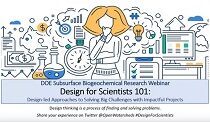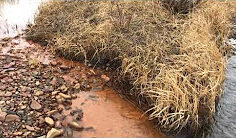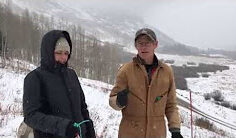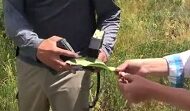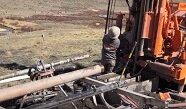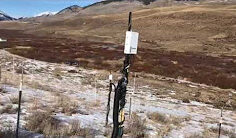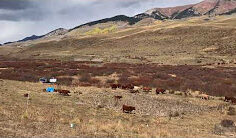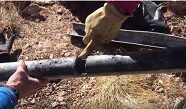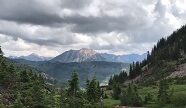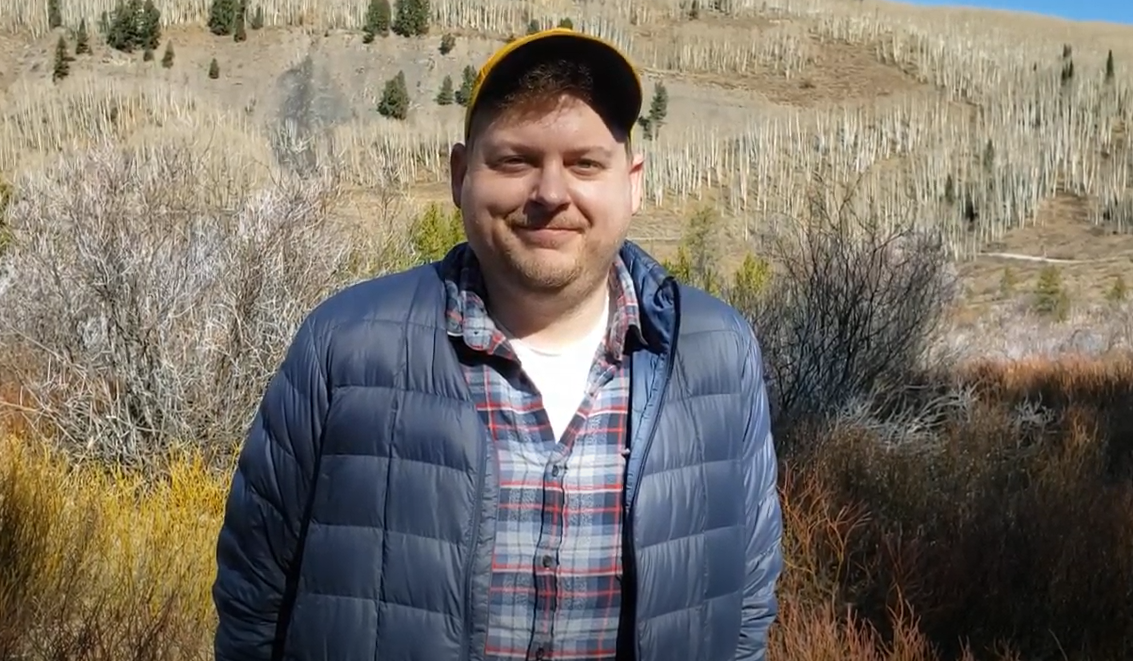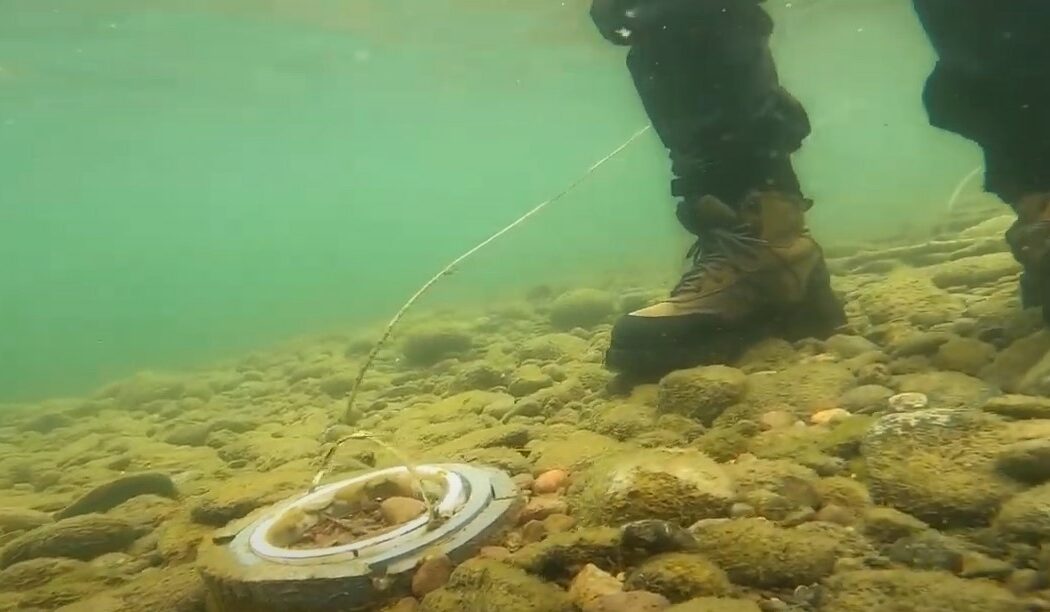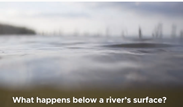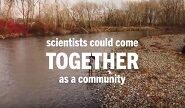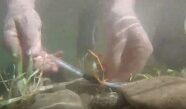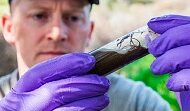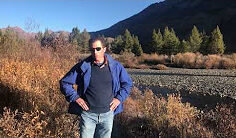Jump to: Terrestrial Ecological Projects | Subsurface Biogeochemical Research Webinar | ANL SFA | LBNL SFA | PNNL SFA | SSRL SFA | All Videos
DOE BER Program
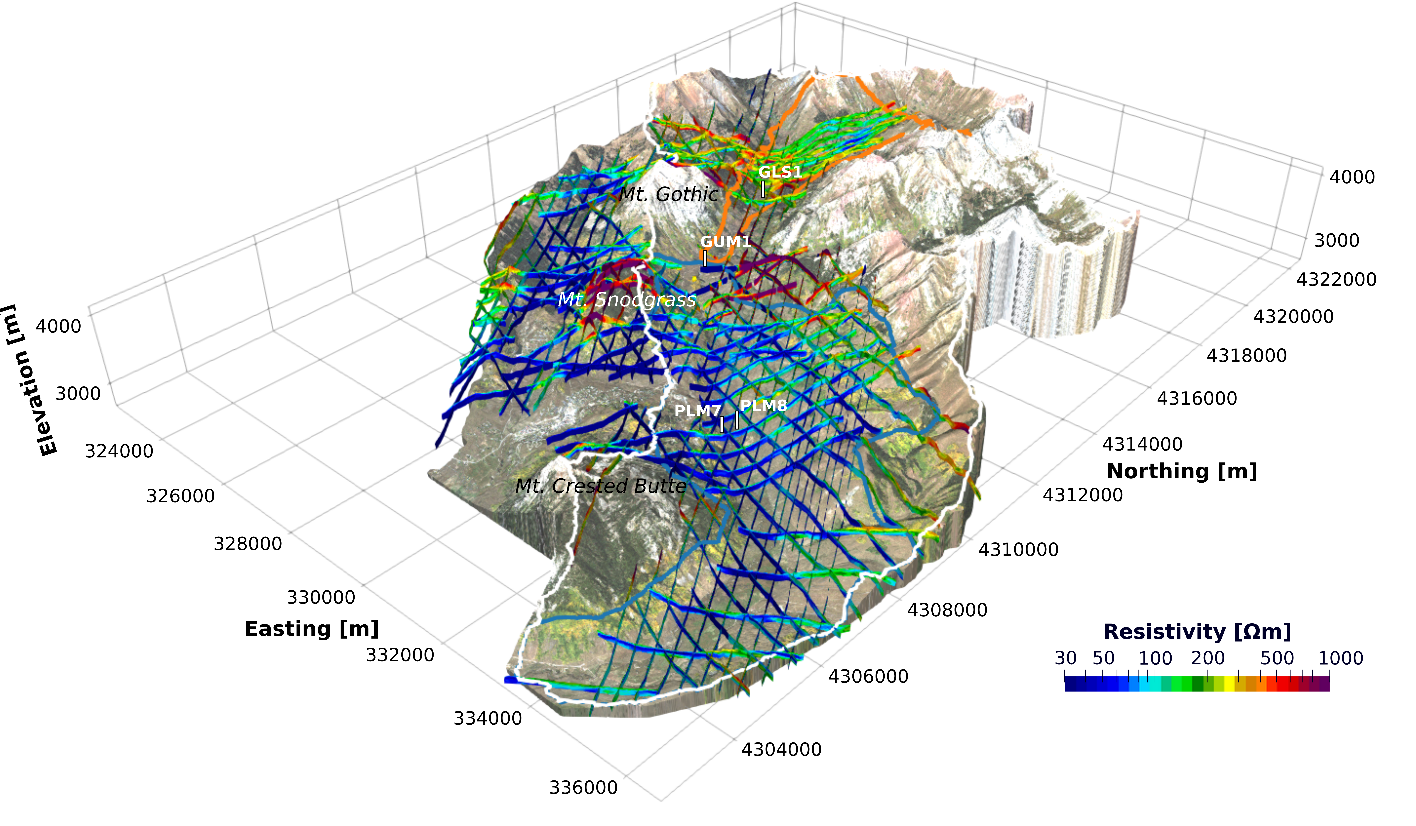
BER Overview Video
Short overview of the DOE Biological and Environmental Research Program
Terrestrial Ecology Projects
Greenhouse Gas Tower
A group of researchers from the Research Institute of the Peruvian Amazon (IIAP) conducts studies on air cycles and movements using a greenhouse gas capture tower and other sensors in the Quistococha aguajal palm swamp. (2022)
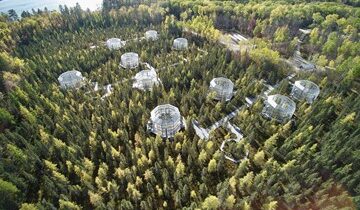
SPRUCE Shows Impacts of Climate Change Scenarios
In celebration of Earth Day 2022, SPRUCE researchers talked with Ben Tracy from CBS Morning about the experiment and how it’s providing a window into the future of peatlands affected by climate change. (2022)
Subsurface Biogeochemical Research Webinar
Design for Scientists 101: An ESS Webinar
This webinar introduces scientists to design-led approaches to solving big challenges with impactful projects. (2019; Note: audio starts at ~2 min]
Tims Branch Wetlands Site, Savannah River National Laboratory; Aiken, SC
Wetland Hydrobiogeochemistry Scientific Focus Area at Argonne National Laboratory (ANL)
Gamma Sampling at Tims Branch
SRNL, ANL, Clemson, and UGA researchers studying low-level uranium concentrated in Tims Branch wetlands in Aiken, SC. (2020)
East River, Rocky Mountain Biological Laboratory (RMBL), Redwell Basin Field Site; Colorado
Watershed Function Scientific Focus Area at Lawrence Berkeley National Laboratory (LBNL)
General Headwaters Watershed Research
Introduction - Watershed Function SFA
A LBNL team studies ecosystem changes in a research area along the East River catchment near the Upper Colorado River headwaters.
Plants as Sensors - Watershed Function SFA
A LBNL team studies changes to plant communities along the East River catchment near the Upper Colorado River headwaters.
Nitrogen Worlds - Watershed Function SFA
LBNL scientists are working to identify major inputs and exports of nitrogen in a pristine East River, Colorado, watershed system.
Characterizing Rifle Subsurface Microbes
LBNL’s Jill Banfield on how the DOE JGI advanced her research on the roles of subsurface microbial communities in biogeochemical cycling (2015).
Metabolic Potential
LBNL researchers discuss how metabolic lifestyles of microbial communities modulate in response to as well as influence environmental change. (2015)
Watershed Structure and Controls
LBNL’s Ken Williams discusses identification and monitoring of primary factors that control biogeochemical functioning. (2015)
Genomes-to-Watershed
LBNL SFA overview by Susan Hubbard on its mission to develop a predictive understanding of terrestrial environments. (2014)
East River Site
4D Digital Watershed
LBNL researchers study ecosystem changes in a research area along the East River catchment near the Upper Colorado River headwaters.
East River Virtual Site Visit
Watch one of the groundwater discharge zones into the East River (northeast of Crested Butte, Colorado) being studied by researchers (2017).
Hillslope Sites
Meet the Scientist: Marty Briggs (USGS)
Meet Marty Briggs who is working within the East River watershed to explore a diversity of groundwater-surface zone interactions zones. (2018)
Meet the Scientist: Rick Colwell and Laura Lapham
Project using osmotically driven pumps to continuous sample groundwater, pore water, and stream water under harsh winter conditions. (2017)
Ground-based Hyperspectral Data Collection and Sampling
Sampling approach to link ground and airborne based hyperspectral measurements with plant chemistry and functional type. (2017)
Irwin Field Site
Snow Pit Digging
Virtual site visit of snow pit digging associated with the April 2019 “peak SWE” NASA-JPL Airborne Snow Observatory (ASO) overflight. (2019)
Snow Pit Sampling
Virtual site visit of snow pit sampling associated with the April 2019 “peak SWE” NASA-JPL Airborne Snow Observatory (ASO) overflight. (2019)
Pumphouse Site
Offchannel Wetland Complex Upstream from Pumphouse
Virtual site visit of the off-channel wetland complex upstream of the Pumphouse region on the East River main stem. (2019)
Pumphouse Lower Montane Shale Drilling
Drilling activity (Oct. 7, 2018) associated with coring borehole PLM5 along the Pumphouse lower montane hillslope intensive study area. (2018)
Meet the Scientist: Audrey Sawyer and Mike Wilkins
Teams working the Pumphouse reach of the East River studying river stage variations on biogeochemical reactions in streambed sediments. (2018)
Pumphouse Snowmelt Manipulation Site
Video presents the experimental snowmelt manipulation plots along the Pumphouse hillslope. (2018)
Pumphouse Intensive Hillslope Study Site
Site conditions along the Pumphouse intensive hillslope study site. Infrastructure improvements tied to winter and spring sampling. (2017)
Pumphouse Cattle Drive
See the Pumphouse site during “peak cattle” event as a herd was driven down the East River valley amongst the SFA infrastructure. (2017)
Redwell Basin Site
Meet the Scientist: Andy Manning and Lyndsay Ball
Research activities of USGS scientists Andy Manning and Lyndsay Ball within the East River watershed tied to the Redwell Basin drilling project. (2017
Upper Elevation" Redwell Basin Drilling
Heavily mineralized 180’ deep core is presented, with mineralization present in altered sand/silt stones of Mesa Verde formation, Mancos shale. (2017)
Core Recovery Upper Elevation Redwell Basin
Mineralized core including massive pyrite and apparent fault zone/fault gouge in the altered sand and silt stones of the Mesa Verde formation. (2017)
Hydrologic Testing in Redwell Basin
Packer system and method used for downhole rock permeability measurements within the Upper Elevation borehole drilled in the Redwell Basin. (2017)
Virtual Tour: Redwell Basin Part 1 and Part 2
Tour of research activities planned to examine the impact of climate disturbance on metals release from mountain watersheds. (July 13, 2017)
Slate River Site
DOE SBIR-Funded Scientist: Don Nuzio
East River Community Watershed is used to test novel electrochemical platform to quantify riverine fluxes of oxygen and metals. (2019)
Water Infiltration Experiment at the Slate River
Postdoctoral researcher Bradley Tolar discusses his infiltration experiment at the Slate River in Colorado, conducted as part of the SLAC Floodplain Hydro-Biogeochemistry SFA .
Columbia River Reach, Hanford Site; Washington
River Corridor and Watershed Hydrobiogeochemistry Scientific Focus Area at Pacific Northwest National Laboratory (PNNL)
Measuring Particulate Organic Matter Deposition in the Hyporheic Zone
PNNL researchers deploy particulate organic matter (POM) traps on the Columbia River shoreline to better understand the microbial ecology of this subsurface zone beneath the riverbed. (2020)
Mapping Underwater Chemical Activities
Researchers at PNNL re-engineered a technique known as electrical resistivity tomography to study waterway interactions. (2020)

WHONDRS Research Consortium
Overview of the aims and goals of the WHONDRS research consortium. (2019)
WHONDRS Surface Water Sampling Protocol
Demonstrates protocol for a global-scale community-enabled study of surface water metabolomics led by WHONDRS. (2019)
WHONDRS Diel Cycling Study Protocol
Demonstrates protocol for 48-hour Diel Cycling Study for WHONDRS. (2018)
New Hydrobiogeochemistry Sensor in River Corridors
New sensor technology for estimating the mass flux of water through subsurface sediments in dynamic systems. (2018)
Multidisciplinary Instrumentation and Modeling
Details of a Columbia River experiment to help predict hydrobiogeochemical function under future environmental conditions. (2017)
Real-time 4D Subsurface Imaging
2016 R&D 100 Award-winning imaging technology that enables researchers—for the first time—to take four-dimensional views of the subsurface. (2016)
Mighty Microbes Where Rivers Run
Ecologist James Stegen discuss hyporheic zone research in the area where river water and groundwater mix along the Columbia River. (2016)
East River, Colorado and Riverton, Wyoming Field Sites
Floodplain Hydro-Biogeochemistry Scientific Focus Area at Stanford Synchrotron Radiation Lightsource (SSRL)
X-ray Microprobes in Water Quality Models
John Bargar shows how an X-ray microprobe can be used to develop models to manage water quality and predict our nation’s water availability. (2018)


